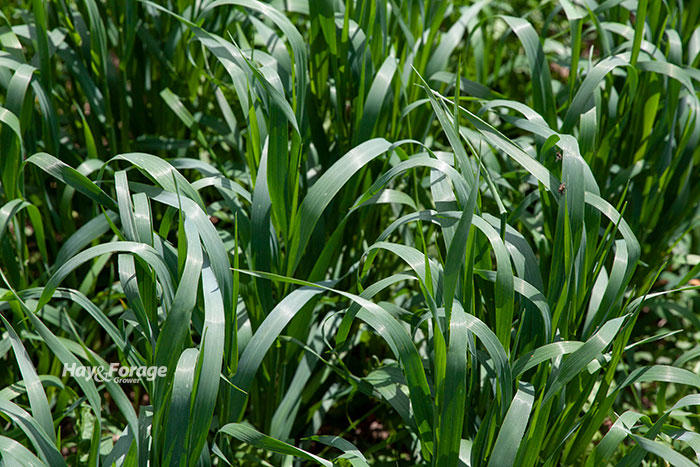
When horse power, not horsepower, ruled our farm fields, we were a nation of oat growers. Those days have long passed, but the utility of oats still remains as a forage crop, and not just to feed horses.
If winter annuals didn’t get planted last fall, if they winterkilled, or if perennials suffered winter injury, oats can be planted in spring and harvested earlier than most other forage alternatives. Further, they can be chopped, baled, or grazed with most of the growing season still ahead. For example, many people plant oats in early spring and then follow them up with a summer annual such as sorghum-sudangrass or pearl millet.
It’s generally recommended to plant certified seed because bin-run oats are not tested, may contain weed seeds and other foreign material, and have unknown seed germination.
There are several oat varieties that have been specifically bred for forage production. Dry matter yields for these varieties can be up to 25% higher than standard grain varieties, but they often mature about a week later. Maturity needs to be considered if you’re planting another crop after the oats are harvested.
The typical planting window for spring oats varies by location but generally adheres to the mantra of “whenever the soil is dry enough to seed into.” Planting dates in March and April are typical for a large part of the U.S., although some Southern areas may already have oats in the ground.
With good growing conditions, forage production from spring-planted oats can range between 2 and 2.5 tons of dry matter per acre. Based on this amount, nitrogen (N) fertilizer should be applied at a rate of 40 to 60 pounds of actual N per acre following establishment. Although the cost of nitrogen is high, it will enhance both yield and forage quality.
Spring-planted oats do not produce many tillers. Therefore, a higher seeding rate and slightly shallower planting depth can result in quicker establishment and greater growth.
Oat growth typically improves when the seed is drill-planted at a rate of 80 to 100 pounds per acre. In areas with lower precipitation, it is more common for seed to be planted at 40 to 60 pounds per acre. Seeding depth can be up to 1.5 inches, but planting at 0.5 to 0.75 inches accelerates emergence, establishment, and forage production potential.
When spring temperatures begin rising, oats mature rapidly and quality declines. This is the big difference between spring-planted and fall-planted oats. The former finishes in warm weather while the latter does so under cool conditions.
Spring-planted oats won’t meet the “rocket fuel” quality of fall-planted oats, but their forage nutrient value is still very good if harvested at or before early heading.
Before grazing, oats should be a minimum of 6 inches tall. Each acre of spring-planted oats can provide between 35 and 60 days of grazing when stocked at one mature cow per acre. Growing cattle, up to 750 pounds, can be stocked at about 1.5 animals per acre for 60 days. Strip-grazing will optimize utilization and allow for more grazing days per acre.

